The Federal Energy Management Program (FEMP) and other organizations offer resources to help federal agencies manage vehicle fleets and increase the use of alternative fuels.
JUMP TO:
Featured Resources
-
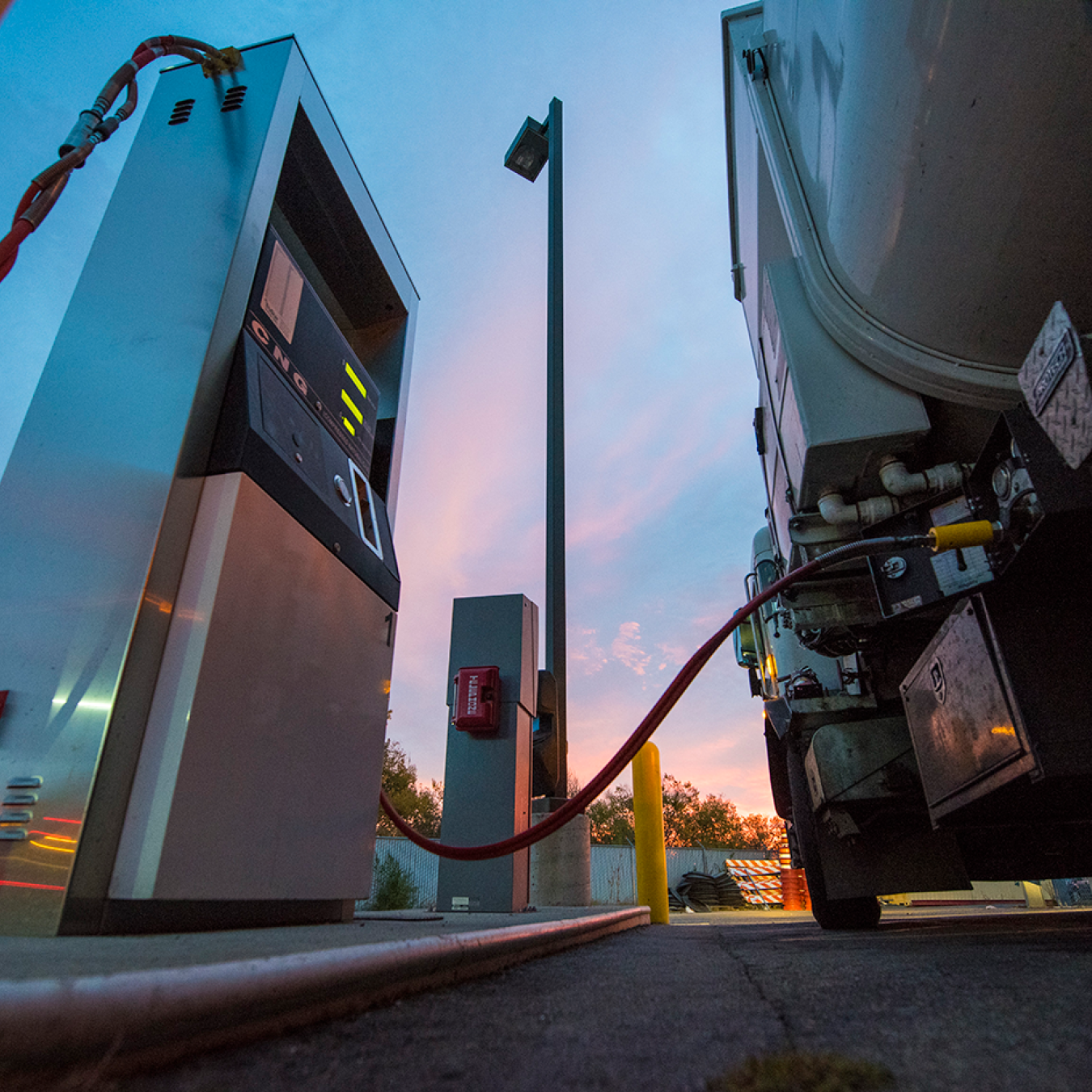 AFV technologies help federal fleets meet statutory requirements for fleet management.June 16, 2025
AFV technologies help federal fleets meet statutory requirements for fleet management.June 16, 2025 -
 Describes an approach to fleet management that incorporates resilience and provides an overview of fleet resilience considerations.
Describes an approach to fleet management that incorporates resilience and provides an overview of fleet resilience considerations.
-
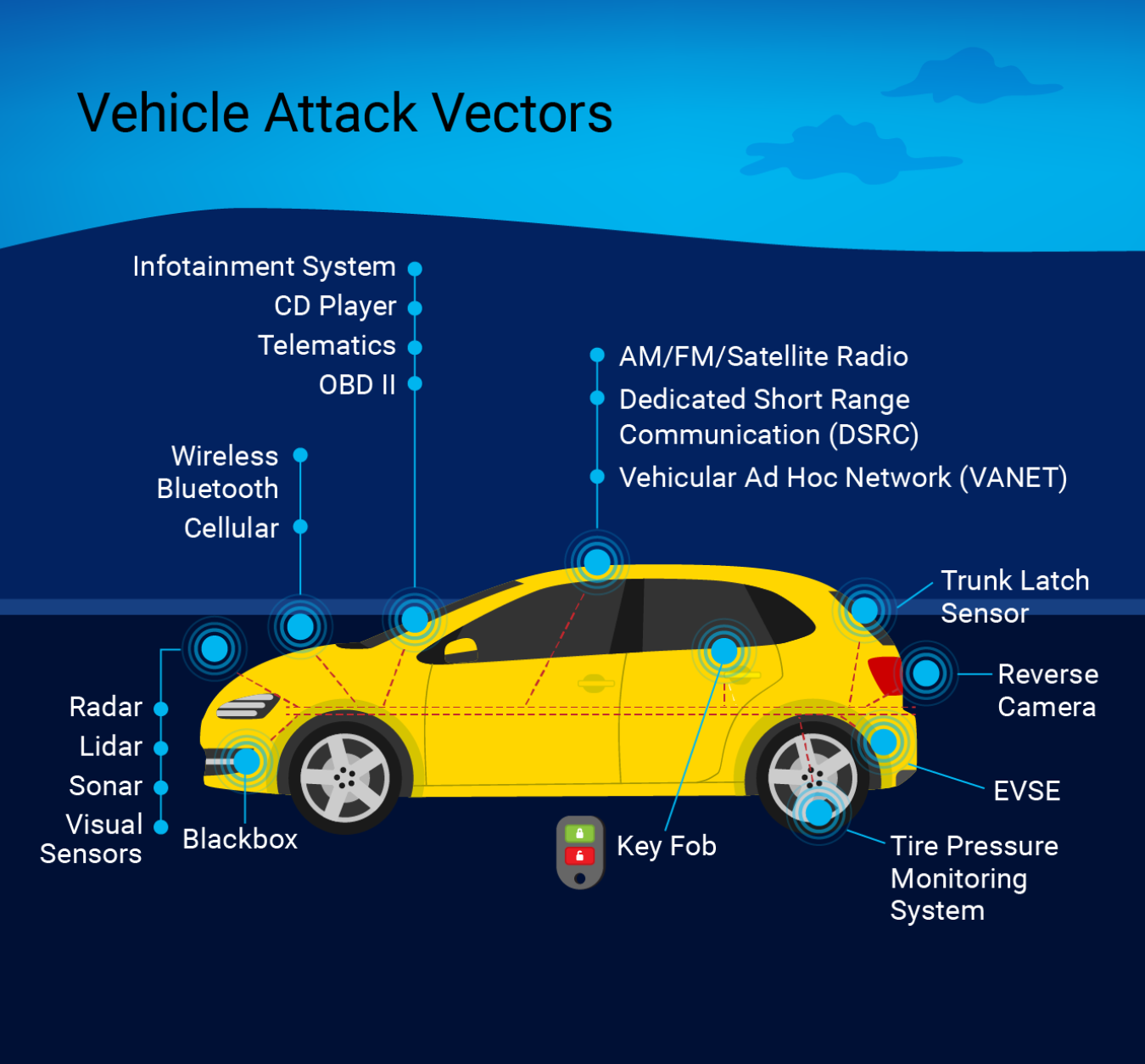 Helps agencies plan for the emerging cybersecurity vulnerabilities associated with modern vehicles.
Helps agencies plan for the emerging cybersecurity vulnerabilities associated with modern vehicles. -
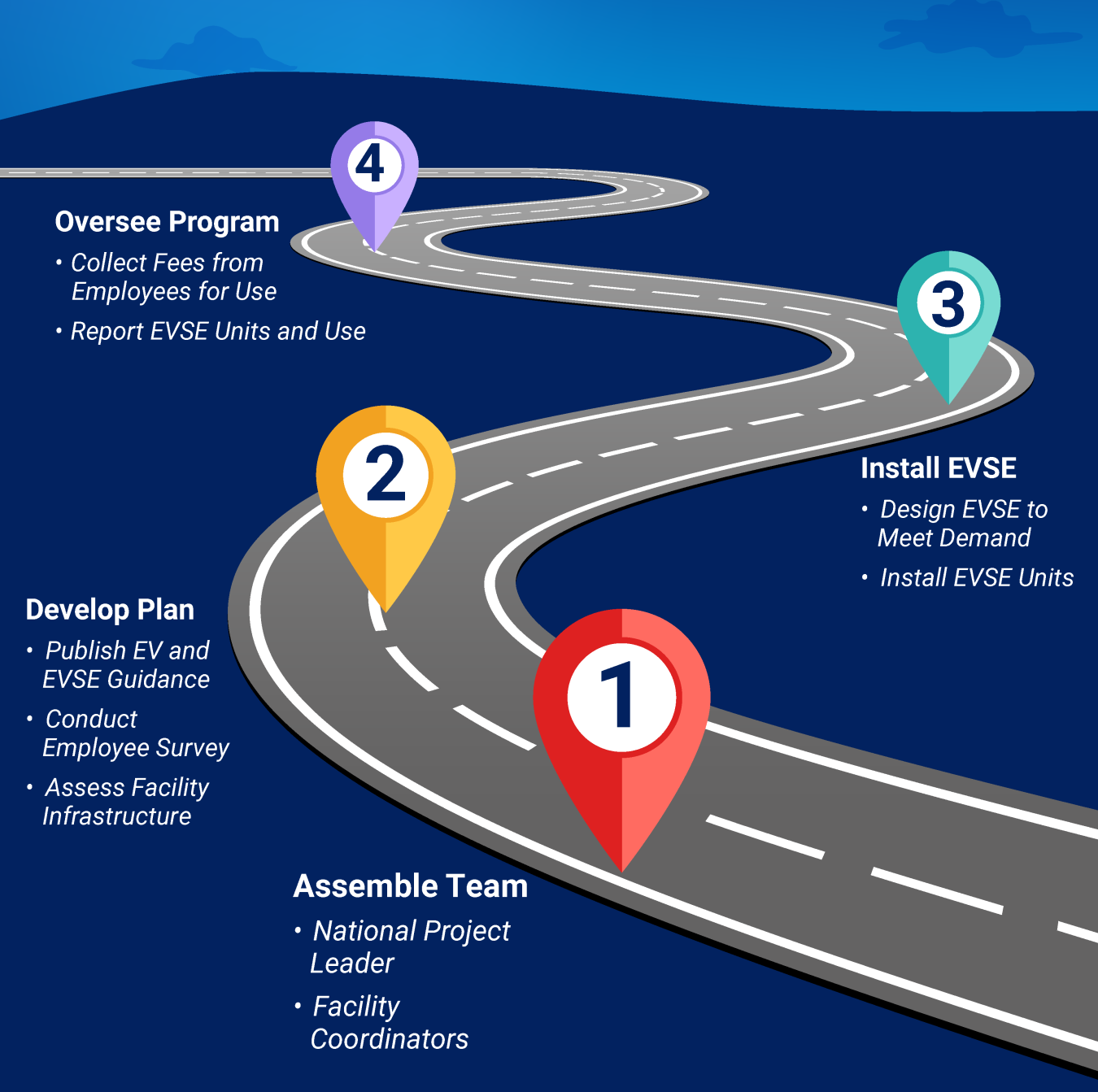 Provides suggested language for workplace charging policies to help agencies define requirements for charging privately owned vehicles.
Provides suggested language for workplace charging policies to help agencies define requirements for charging privately owned vehicles.
-
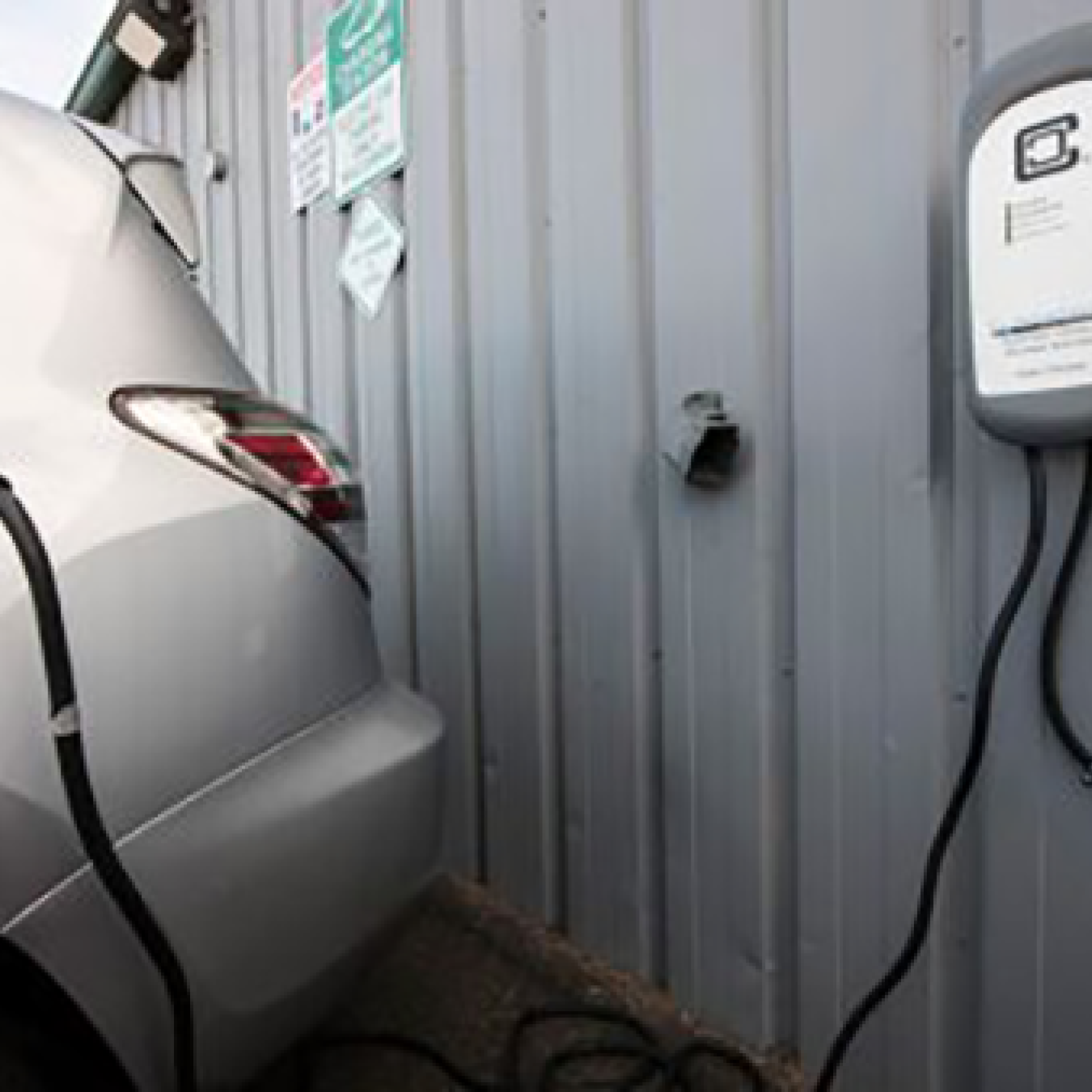 Details how performance contracts can help increase zero emission vehicles in the federal fleet portfolio and enhance efficiency goals.June 23, 2025
Details how performance contracts can help increase zero emission vehicles in the federal fleet portfolio and enhance efficiency goals.June 23, 2025 -
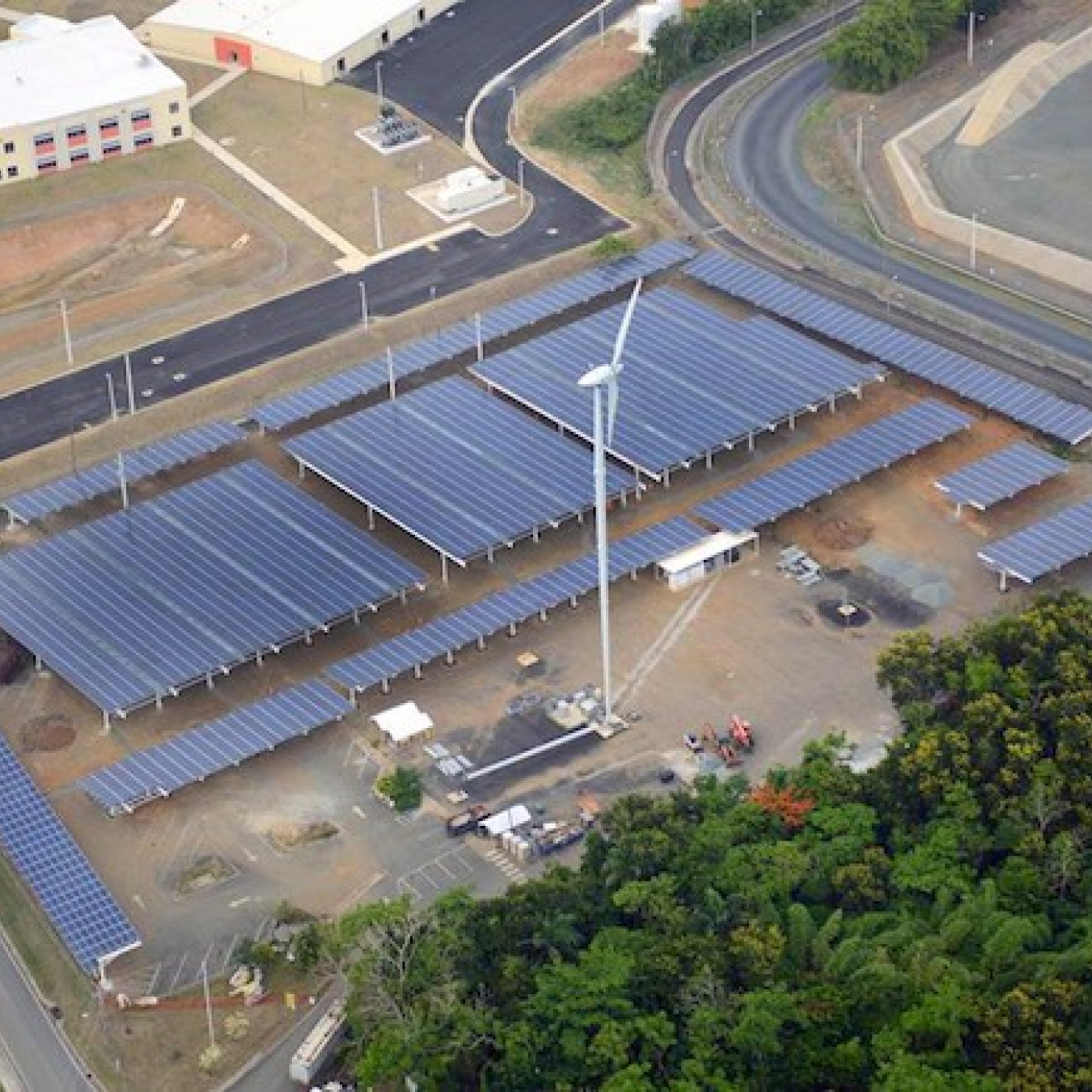 Ensures that fleet vehicles are powered when needed, while reducing burdens on facilities and supporting grid resilience.June 18, 2025
Ensures that fleet vehicles are powered when needed, while reducing burdens on facilities and supporting grid resilience.June 18, 2025
-
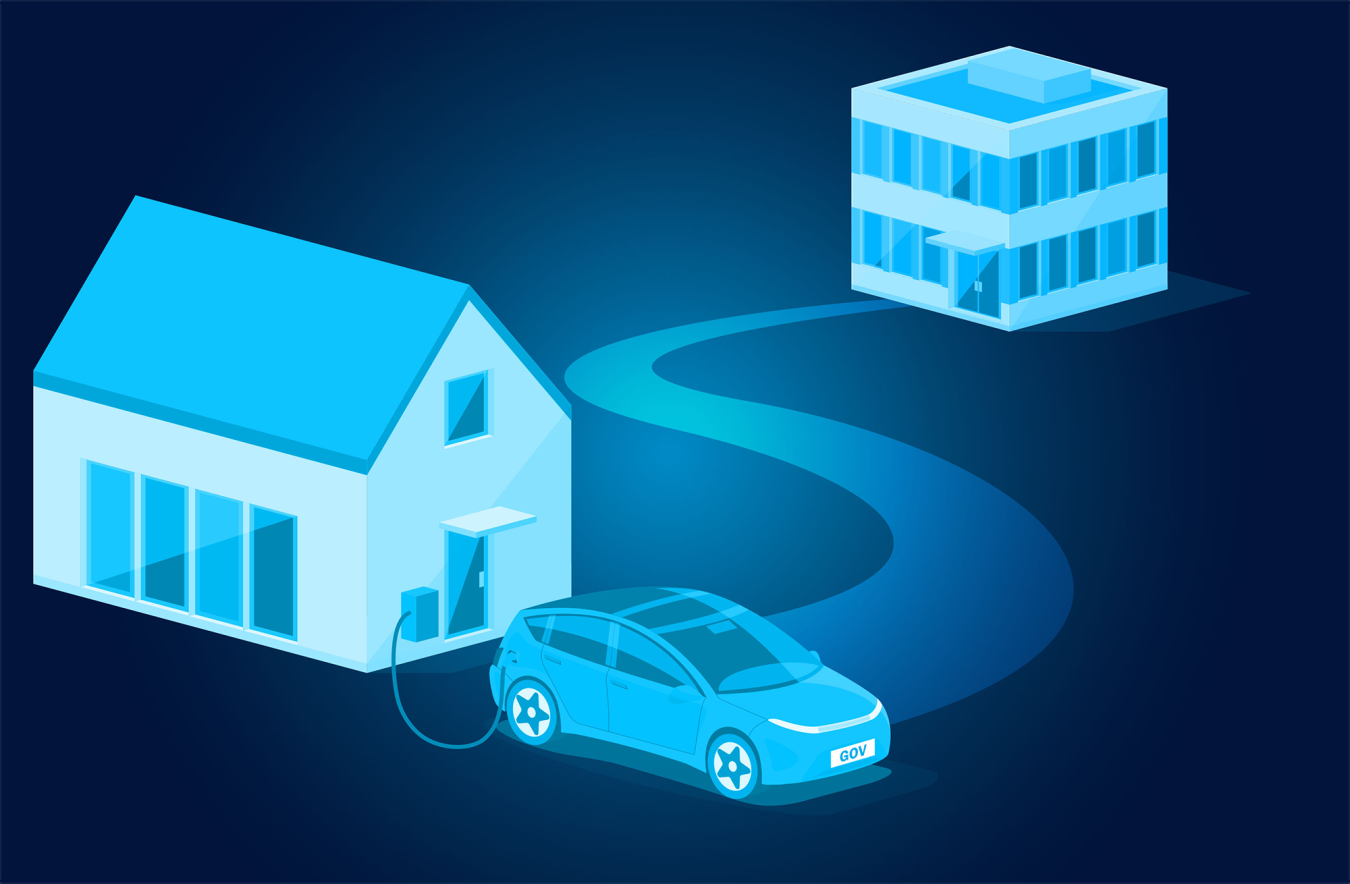 Helps agencies develop resources for home-to-work government-owned EVs comply with Federal regulations.
Helps agencies develop resources for home-to-work government-owned EVs comply with Federal regulations.
Acquisition Gateway: GSA tool that supports the overall government-wide category management initiative to consolidate information from government agencies related to federal spending in one centralized location.
AFLEET: DOE and Argonne National Laboratory tool that analyzes the environmental and economic costs of fleets, comparing alternative fuel vehicles (AFVs) to petroleum counterparts, showing cost of ownership based on varying fuel prices, financing, maintenance, externality costs of pollution, and other sensitivities.
Alternative Fuel Vehicles: GSA website lists GSA Fleet resources for acquiring AFVs to help meet federal sustainability requirements.
Alternative Fueling Station Locator: AFDC tool displaying verified public and private fueling stations by proximity to an address or ZIP code, or along a driving route.
Alternative Fuels Data Center (AFDC): DOE's wide range of information and tools support the use of alternative fuels in addition to other petroleum reduction options such as advanced vehicles, fuel blends, idle reduction, and fuel economy.
Alternative Fuels Data Center: Electric Vehicles for Fleets: This web tool provides information on charging EVs, EVs in fleet applications, and how to install infrastructure.
Alternative Fuels Data Center: Inflation Reduction Act of 2022: The Inflation Reduction Act of 2022 (Public Law 117-169) amends the Qualified Plug-in Electric Drive Motor Vehicle Credit (IRC 30D), now known as the Clean Vehicle Credit, and adds a new requirement for final assembly in North America that takes effect on August 16, 2022. There is currently no direct funding available for the federal fleets. This tool provides a list of vehicles with final assembly in North America.
Alternative Fuels Data Center: TransAtlas: Map shows the density of light-duty vehicles per state based on registration counts derived by the National Laboratory of the Rockies (NLR) with data from Experian Information Solutions.
Caldera: Caldera is an EV infrastructure simulation platform that enables the development of control strategies and artificial intelligence (AI) for holistic integration of electric transportation with the grid.
Drive Electric Fuel Savings Calculator: Argonne’s Drive Electric Fuel Savings Calculator helps users to compare the cost of driving a battery electric vehicle (BEV) or a plug-in hybrid electric vehicle (PHEV) to a conventional vehicle where you live.
E85 Prices: E85 fuel pricing application compares fuel prices at the pump.
EISA-Compliant Vehicles: EPA resource lists vehicles (by model year) that comply with EISA Section 141 low greenhouse gas (GHG)-emission requirements, along with federal agency EISA 141 compliance levels and statutory guidance.
Ethanol Fueling Infrastructure Development: Information for fleet managers interested in installing E85 infrastructure.
Ethanol Retailer: Resources to help fuel retailers understand how to sell higher blends of ethanol.
EVI-X Modeling Suite of Electric Vehicle Charging Infrastructure Analysis Tools: NLR's EVI-X modeling suite informs the development of large-scale electric vehicle (EV) charging infrastructure deployments—from the regional, state, and national levels to site and facility operations.
Federal Automotive Statistical Tool (FAST): DOE, GSA, and Idaho National Laboratory compliance reporting tool with information from federal agencies on vehicle inventories, fleet locations, fleet costs and mileage, fuel consumption, and fueling infrastructure.
Federal Fleet Report Dashboard: GSA OGP tool that allows fleet managers to recreate the data from the yearly FAST report in a more visual fashion and incorporate trends over previous years.
Federal Fleet ZEV Ready Center: FEMP's Federal Fleet ZEV Ready Center provides a process and guide to help federal fleet and facility managers select and acquire ZEVs and EVSE—or EV charging stations—for their fleet.
FleetDASH: DOE and National Laboratory of the Rockies tool that encourages fleet managers to increase alternative fuel utilization by tracking missed opportunities to fuel dual-fuel vehicles on alternative fuel. Fleet managers can also track vehicle fueling locations and identify underutilized vehicles, overlapping routes, and good opportunities for electric vehicles (EVs).
Geospatial Energy Mapper (GEM): GEM is an interactive web-based decision support system developed by Argonne that allows users to locate areas with high suitability for clean power generation and potential energy transmission corridors in the United States. Browse and download data layers, or create a custom suitability model to identify areas for energy development.
Green Vehicle Guide: U.S. Environmental Protection Agency (EPA) overview of vehicles that are more efficient and less polluting.
GSAFleet: GSA's fleet management system helps federal agencies store, track, and report on their agency-owned vehicle fleet.
GSA Vehicle Leasing: Overview of GSA vehicle leasing processes and guidelines for federal agency fleets.
HEVISAM: Argonne's Heavy-Duty Battery Electric Vehicle Infrastructure Scenario Analysis Model (HEVISAM) is a publicly available techno-economic analysis tool to analyze the cost of direct current fast charging (DCFC) for medium- and heavy-duty battery electric fleets (M/HDEFs). The model allows M/HDEF operators to design a charging station for their fleet based on their charging needs, and estimates capital cost, operating and maintenance (O&M) cost, energy cost of the station, as well as its cash flows and levelized charging cost.
JOBS: Argonne's JOBS Models evaluate how installing infrastructure for existing and emerging fuels affects jobs, earnings, ripple-effect spending, and gross economic output. JOBS translates expenditures for fueling infrastructure into dollar flows among industries, with impacts analyzed according to location and deployment level. JOBS tools enable scenarios at national, regional, and state scales.
Petroleum Reduction Planning Tool (PReP): AFDC tool that allows fleets to create a comprehensive plan for reducing petroleum consumption and GHG emissions.
Plug Share: Map displaying public and private electric vehicle charging stations.
Route Planning Tool: AFDC route planning tool leverages alternative fueling stations along a driving route.
TransAtlas: AFDC interactive map displays existing and planned alternative fueling stations, alternative fuel production facilities, and light-duty vehicle densities.
U-Finder: The U-Finder tool, developed by NLR, allows EV charger deployment stakeholders to identify local utility partners and known charger installation incentives to speed project engagement and provide a platform for utilities to raise awareness of EV charger installation support.
U.S. Atlas of Electric Distribution System Hosting Capacity Maps: Hosted by DOE, this is a centralized location to locate publicly available hosting capacity maps. Utilities, developers, and other stakeholders can use hosting capacity maps to better plan and site energy infrastructure. Hosting capacity maps provide greater transparency about where additional distributed energy resources (DERs), or new loads such as EV chargers, can be readily connected.
Vehicle Cost Calculator: AFDC tool compares total cost of ownership (TCO) and well to wheels emissions among different vehicle models, including AFVs.
Vehicle Purchasing Overview: Overview of GSA vehicle buying processes and guidelines for federal agency fleets.
Workplace Charging at Federal Facilities: DOE's reference for federal agencies interested in workplace plug-in electric vehicle (PEV) charging stations, including federal authorization, guidance, and other resources.
Fleet Resilience
Federal Fleet Resilience Planning: Reviews some of the hazards, threats, and disruptions that fleets may face, describes an approach to fleet management that incorporates resilience, and provides an overview of fleet resilience considerations.
Fleet Management
Federal Best Practices: Core Principles of Sustainable Fleet Management: Helps agency fleet managers understand and implement optimal petroleum reduction strategies for each fleet location by evaluating the most appropriate combination of the four core principles of sustainable fleet management.
Guidance for Federal Agencies on EPAct 2005 Section 701: Describes the two processes through which DOE will begin evaluating waiver requests for FY 2021 (beginning with the FY 2020 data call).
Telematics
Telematics Framework for Federal Agencies: Lessons from the Marine Corps Fleet: Provides an overview of telematics capabilities and lessons learned from the deployment of telematics in the Marine Corps fleet.
Vehicle Purchasing
Vehicle Purchasing Overview: Overview of GSA vehicle buying processes and guidelines for federal agency fleets.
Fleet Electrification
Grand Teton National Park Federal Fleet Tiger Team EVSE Site Assessment: Report supports the development of a zero-emission vehicle (ZEV) and electric vehicle supply equipment (EVSE) deployment plan for Grand Teton National Park, which can be incorporated into the overall U.S. Department of the Interior ZEV fleet strategy.
Golden Gate National Recreation Area Federal Fleet Tiger Team EVSE Site Assessment: Report supports the development of a ZEV and EVSE deployment plan for the Golden Gate National Recreation Area, which can be incorporated into the overall U.S. Department of the Interior ZEV fleet strategy.
Deploying Electric Vehicles and Electric Vehicle Supply Equipment: Fact sheet describes FEMP project assistance to federal agencies transitioning to plug-in electric vehicles, including battery electric vehicles and plug-in hybrid electric vehicles.
Electric Vehicle Supply Equipment Tiger Team Site Assessment Findings from Army Facilities: Summarizes site assessment results and provides lessons learned for deploying electric vehicles.
Alternative Fuels Data Center, Clean Cities, State and Alternative Fuel Provider Fleets
AFDC and Clean Cities Publications: Database that includes publications about alternative transportation, including alternative fuels, advanced vehicles, and regulated fleets.
State and Alternative Fuel Provider Fleets Case Studies: Case studies and success stories about state and alternative fuel provider fleets meeting Energy Policy Act (EPAct) requirements.
The following conferences provide federal agencies with education, training, and networking opportunities related to fleet and fuel management.
Clean Fuels Conference: A biodiesel, renewable diesel, and sustainable aviation fuel conference and networking event, attended by clean fuels producers and marketers, distributors, feedstock providers, fleet managers, ESG officers and media.
DOE Regional Workshops: One-day workshops offered by the EPAct State and Alternative Fuel Provider Fleet Program to facilitate collaboration among alternative fuel stakeholders and spur infrastructure development.
Energy Exchange: Organized by FEMP, this educational and networking forum helps federal employees expand their knowledge of building operations, energy and fleet management, and sustainability practices.
FedFleet: GSA hosts FedFleet training sessions each year at the Washington Auto Show. FedFleet is a no-cost event for federal employees with valid federal identification. Because FedFleet is held in conjunction with the Washington Auto Show (a nongovernment site), registering for the training provides you with private access to the auto show and exhibitor floors.
Government Fleet Expo and Conference: Conference for managers of government fleets featuring valuable workshops, certifications, panels, and roundtable discussions.
Green Truck Summit: National conference on the latest technologies and fuels for medium- and heavy-duty vehicles and buses.
NAFA Annual Institute & Expo: Fleet management resources, products, training, and education opportunities organized by the National Association of Fleet Administrators (NAFA).
National Ethanol Conference: Conference with opportunities for industry interaction, networking, and education on marketing and policy issues impacting the U.S. ethanol industry.
The following newsletters from federal agencies and private industry contain the latest in vehicle and fuel management technologies and practices.
Alternative Fuel Price Report: Quarterly Clean Cities newsletter covers the regional average price of alternative fuels in the United States in relation to gasoline and diesel prices.
Clean Cities Now: Semi-annual Clean Cities publication showcases program activities, accomplishments, and resources, and highlights the successes of Clean Cities’ nearly 100 coalitions as they work to reduce petroleum use in transportation.
Energy Saver Blog: Blog provided by the DOE Office of Energy Efficiency and Renewable Energy (EERE) discussing energy issues, including transportation management.
EPAct State and Alternative Fuel Provider Fleets Newsletter: Annual electronic newsletter that provides fleet managers and stakeholders with updates about the State and Alternative Fuel Provider Fleet Program and EPAct requirements.
E-Blog: Renewable Fuels Association blog covering the ethanol industry.

